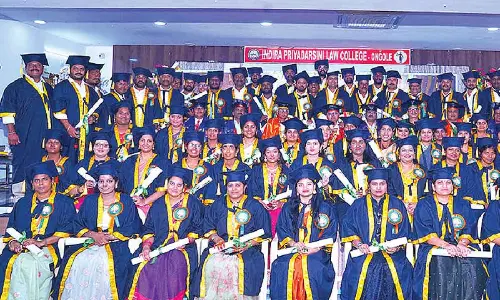Need for Integrated Emergency Response

There is an absolute requirement to establish Integrated Emergency Response Centers (IERC) in each State covering all National Highways and major State Highways.
There is an absolute requirement to establish Integrated Emergency Response Centers (IERC) in each State covering all National Highways and major State Highways.
This is according to a report by a Multi-stake holder partnership leading to the successful implementation of Highway Emergency Response and Accident Mitigation (HERAM) with the participation of Insurance Regulatory and Development Authority (IRDA) and the General Insurance Council (GIC).
Dr AP Ranga Rao who was the chief architect and who conceptualized the highly successful “108 Ambulance” services headed a study group and piloted a project leading to this evidence based and data supported conclusion.
India is suffering from a huge burden of road accidents and fatalities. The number of road accident deaths in India is the highest in the world and road safety has become an issue of national concern.
Road accidents are a human tragedy, which cause great suffering to our people. Compound Annual Growth Rate (CAGR) of number of road accident fatalities in India, increased from 3.7 per cent during the decade 1994 -2004 to 4.4 per cent during 2005-2015.
The total number of road accidents increased by 2.5%, deaths by 4.6%, Injuries by 1.4% in one year from 2014 to 2015. In 2014 out of 4, 89, 400 accidents the deaths recorded were 1, 39, 671 and 4, 93, 474 were injured.
As against this the accidents in 2015 were 5, 01, 423, the deaths were 1, 46, 133 and injured were 5, 00, 279. The increase in accidents was 12, 023, deaths 6, 462 and injuries 6, 805.
Thus, about 1,374 accidents and 400 deaths take place every day on Indian roads, which further translates into 57 accidents and loss of 17 lives on an average every hour in our country.
About 54.1 per cent of all persons killed in road accidents were in the 15 – 34 years age group during the year 2015.
Out of total road accidents, 28.4 per cent, 24.0 per cent and 47.6 per cent of road accidents took place on National Highways, State Highways and Other Roads respectively in the country in 2015.
National Highways (NHs) accounted for a share of 35.0 per cent in total number of persons killed during the calendar year 2015. Road accidents on National Highways have gone up by 3.2 per cent from the year 2014 to 2015.
Persons killed on National Highways have also gone up by 7.5 per cent in same period. A study by the Planning Commission in 2002 estimated the social cost of road accidents in India at Rs. 55,000 crore annually (Yr 2000 prices), which constitutes about 3 per cent of GDP.
Against this background IRDA directed GIC to design a pilot project along a National Highway to mitigate accidents, provide immediate relief and medical assistance to the victims of accidents to reduce mortality and to enable timely and accurate documentation for efficient claim settlement.
A study group headed by Dr AP Ranga Rao submitted its recommendations on a pilot project on 1st September 2012. The report suggested interventions in four crucial areas.
Firstly, accident mitigation would require effective enforcement of the provisions relating to driving licenses, speed limits, not driving while under the influence of alcohol, the use of seat belts and helmets, etc.
Secondly, ambulances designed and equipped to provide lifesaving assistance manned by trained personnel must be stationed at places from where they could be quickly deployed to accident sites so that the injured could be transported within the ‘golden hour’ to appropriate medical facilities.
Thirdly, quick reporting of accidents must be enabled such that the ambulances could be immediately deployed for succor to the victims and the rapid evacuation of the injured to appropriate medical facilities.
Fourthly, the immediate recording of the accident event by the police must be enabled.
The report noted that a unique three or four digit number would need to be assigned which would remain unchanged and over time become known to all.
Finally a call and dispatch centre would need to be established which would receive all emergency calls along the stretch and deploy the ambulances as required.
The GIC considered the report and prepared a comprehensive, replicable, cost-effective Highway Emergency Relief and Management system (HERAM) and submitted a Pilot Project to the IRDA to be implemented along 230 km from Vijayawada to Hyderabad on NH 65. Dr. A.P. Ranga Rao was selected as Principal Consultant to implement the project.
The IRDA approved the Project for a period of two years at a layout of Rs.885 lakhs against which only Rs 574 lakhs have been utilized.
The project set up an inte¬grated emergency response system with five ambulances supported by a call centre, using 1033, the unique number allotted to NHAI.
The project reduced the number of deaths during the two-year period. Some of the features that have contributed to the reduction in the number of deaths are Specially designed Ambulances, One ambulance per 50 Kms, Trained Emergency Management Technicians (EMT), Call centre Physician, Structured reports from EMTs, Alerts to Police, Crane Operator, Toll plaza staff and hospitals and Use of automated unique accident and victim ID.
The functioning of the EMRS, that is the combination of modern ambulances and the round-the-clock call centre, was able to reduce the Severity Index from 42.7 during the pre-project year, to 39 in 2014-15, and further to 38.1 during 2015-16.
In addition to providing for ambulance services and emergency medical care, the project also had a component for assisting the police in preventing accidents through better checking of vehicles and drivers.
The police authorities and officials on the road took a lot of interest in implementing accident prevention measures.
The activities covered by police patrolling officers included Attending accidents, Checking alcohol levels, Speed check of vehicles, Wearing of helmets etc.
It is observed that 14.8% of accidents were caused by drivers under influence of alcohol. 27.3% were caused because of over-speeding, and in 29.19% of cases the drivers were drowsy.
That is about 70% of all accidents are preventable. The NH 65 passes through many habitations. Though liquor outlets on the road are not permitted, liquor is easily available on the side streets of the NH; the ban is not effectively implemented.
In view of this there is a need for highway patrol vehicles. There should be a strategy of making schemes for awareness and education (and where necessary, training) of people in local areas and regulation of drivers/vehicles in such areas.
NHAI & State Governments should jointly plan and provide trauma centers. There should be provision for timely release of some amounts to accident victims by insurance companies.
The impact of the combination of ambulance operations and accident prevention measures has contributed to a significant decline in the number of accidents, fatalities and injured persons during the project period.
According to Dr Ranga Rao, against this successful implementation of pilot project it is recommended that integrated emergency response centers should be established in each State to cover all National highways in the State and also cover major State Highways.
These call centers would use "1033" national number only.
By: Vanam Jwala Narasimha Rao

















